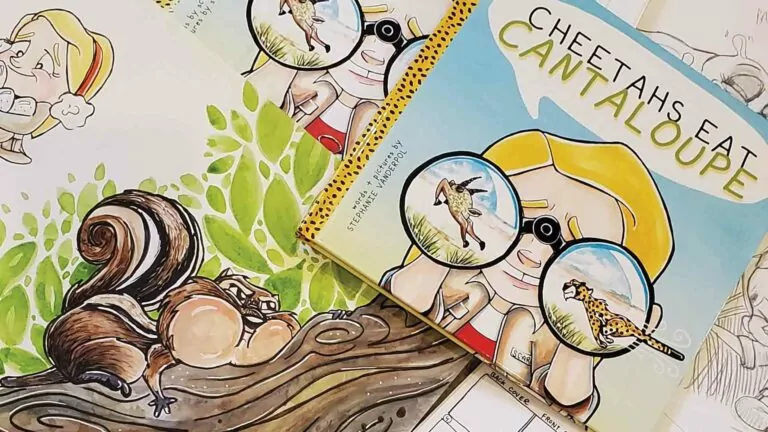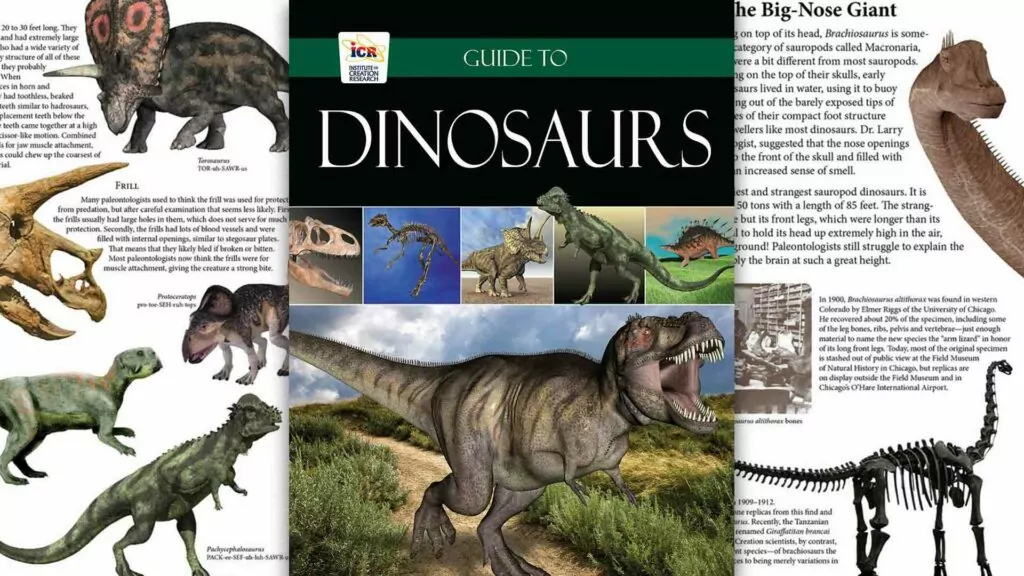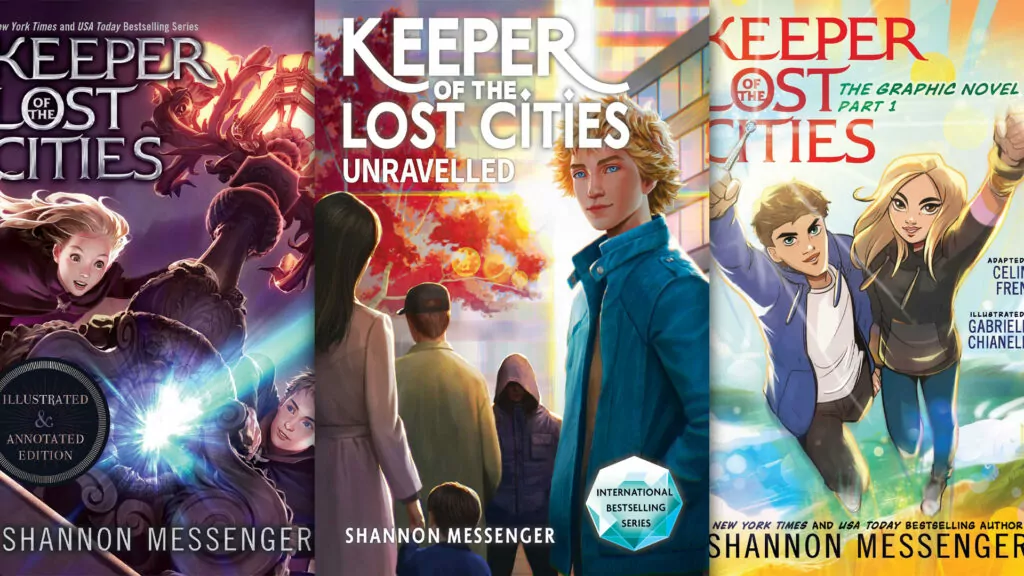Interview with an artist
Stephanie Vanderpol is the author and artist behind RP’s “Come and Explore” children’s pages, and she’s also the author of a new picture book, “Cheetahs Eat Cantaloupe.” If this title sounds a bit odd to you, that’s because it’s an example of the various other animal “facts” that you’ll find inside. I had a chance, recently, to ask the author how her book came about. – JD
*****
Jon Dykstra: In the opening of “Cheetahs Eat Cantaloupe” you explain that it was “inspired by the comical ‘animal facts’ as stated by my daughter Scarlett.” It sounds like you had a zoological expert in the house. What sorts of animal facts was she sharing?

The author and her inspiration
Stephanie Vanderpol: Scarlett has always been interested in animals. When she was two, she had a pet spider, a bucket of worms, and a collection of snails that she would play with on the regular. Outside, of course! Between the ages of six and seven she started sharing animal “facts” like in the book, things like “chipmunks stuff their cheeks because they cannot climb when their hands are full.” The facts were mainly born out of curiosity, sort of her way of answering her own questions of “why does that animal do that?” Sometimes she would write them down and I would find them, or I would overhear her teaching her brother the ways of these animals, or, sometimes, she would outright just tell me.
JD: What prompted you to turn it into a book?
SV: I had been illustrating my daughter’s animal facts and posting them to Instagram at the beginning of COVID thinking that people could use a little bit of joy in their day. A few months in, the winter was looming over me and I knew I needed some sort of project to keep me sane through the winter. I actually got on my knees and asked God to direct my ways, to give me a project that would give Him glory and keep my head above water. He led my heart to the book project. It was initially just for my daughter Scarlett’s 8th birthday, one copy, just for her. But as I posted about it, people got excited and by printing date I had a fair amount of pre-orders. I never would have thought!
JD: What did Scarlett think of how you illustrated each of her “facts”?
SV: Either she would giggle, at which point I knew she liked it, or she’d critique it and tell me what to change. She was very involved in the sketching stage, so it was a cool bonding moment. Maybe I hit the “cool mom” stage with her…though, of course, she never said that out loud.
JD: What was involved to turn this from idea to finished book?
SV: It took over a year to go from the first sketch until I held the final copy in my hands. During the day I would be doing my regular mom job, folding laundry, making meals, keeping the house clean, and then once my kids were tucked into bed at night, I’d whip out all my art supplies, sit on the couch, open up my folding table and get to work. My husband is a school teacher so it worked out well. He’d be sitting with me, marking tests and prepping for the next day, and I’d be playing with my pencils and watercolors, with baby no. 4 kicking away in my belly.
JD: What was the process for a single two-page spread?
SV: Each page had a similar process:
- Take one of Scarlett’s animal facts and imagine what it could look like.
- Sketch the image onto paper until it came out right (sometimes this took up to 15 different tries).
- Run the sketch for approval under the careful eye of Scarlett for laughability, my husband, for common sense and continuity, and my best friend Breanna for accuracy in facial expressions and other artistic critiques.
- Trace the sketch onto watercolor paper using a lightpad and a waterproof pen.
- Using my watercolors, paint the image. This was my favorite part!
- Scan the images into the computer and arrange them and the text in Photoshop, creating the pages as they are in the book.
- Once all the pages were done, I ordered a proof copy of the book to go through final edits, including text, done by my editor, Julia. After many edits and proof copies, I ended up with the final copy!
- Snuggle up on the couch and read the final book to my kids!
JD: We’ve got your book in the school library down here in Lynden, WA. Where else has it reached? And how can people get a copy?
SV: Cheetahs Eat Cantaloupe has made it all across Canada and into the United States, and there’s even a copy in Scotland, too, which is pretty cool. I have a few copies left of the first print run that can be purchased through my website, www.stephanielorinda.com, or on Instagram @stephanielorinda. And if I run out, I’m happy to take pre-orders for the second edition.














